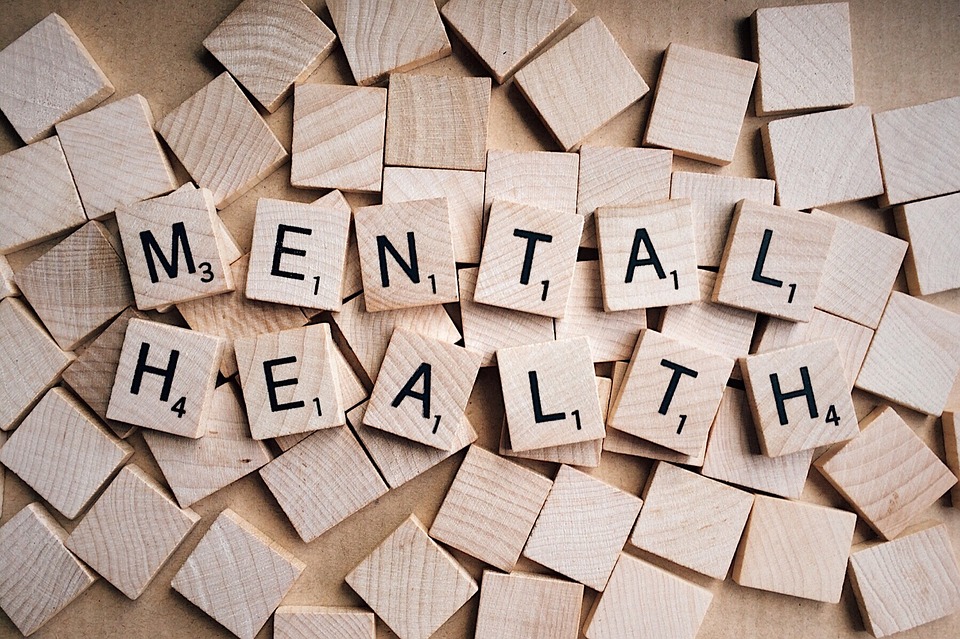For years, students have been taught about physical health in health class with little focus on the role mental health plays in a person’s overall well being. This fall, mental health literacy will be introduced in schools statewide. A peep into the U.S program could help start the debate in Nigeria.
As a health teacher for the Shenendehowa school district, Dustin Verga sees firsthand the pressures today’s youth are under.
They’ve grown up in an era of over-testing, jam-packed schedules, high expectations to get into a top college, and dual lives — one in the real world and one online, where the pressure to curate a picture-perfect life and rack up “likes” is ever-present.
That’s why the introduction of mental health literacy in New York schools this coming fall is such a big deal, Verga said. For as long as anyone can remember, schools have taught children about physical health — food and nutrition, accidents and disease, mood-altering substances — but conspicuously absent has been the role mental health plays in a person’s overall well-being.
“I think my students can identify when they’re feeling stress or anxiety or something else, but I don’t think they understand how to cope with it,” he said. “They don’t know that, just like you might need to rest if you’re sick with the flu, you might need to take care of yourself if you’re not feeling right mentally.”
Youth and mental health
• One in four people are diagnosed with mental illness over the course of a year in the U.S.
• Half of all chronic mental health conditions begin by age 14.
• Half of all lifetime cases of anxiety disorders begin as early as age 8.
• 22 percent of youth ages 13-18 experience serious mental disorders in a given year.
• More than 60 percent of young adults with a mental illness were unable to complete high school
• Young people ages 16-24 with mental illness are four times less likely to be involved in gainful activities, like employment, college or trade school.
• Those with a psychiatric disability are three times more likely to be involved in criminal justice activities.
• Each year, 157,000 children and young adults, ages 10-24, are treated at emergency departments for self-inflicted injuries.
• One in 12 high school students have attempted suicide.
Sources: American Psychiatric Association, National Institute of Mental Health, Centers for Disease Control and Prevention
That could change starting July 1, when a hard-fought-for 2016 law to add mental health to the school curriculum goes into effect. The law makes New York the first state to require, not just encourage, schools to teach mental health, said Glenn Liebman, CEO of the Mental Health Association in New York, a lead advocate behind the law.
What took so long?
The idea of teaching young people about mental health is not a new one.
The mental hygiene movement of the early 1900s introduced society to the concept that mental wellness could be just as important as physical wellness.,
In 1928, a nationwide group of superintendents recommended that mental hygiene be included in the teaching of health education, but it was not.
“When you talk about mental health and mental illness, people are still, because of the stigma, in the closet about it,” Liebman said. “People just don’t talk about it like they talk about physical illness.”
Social media has strengthened the movement to de-stigmatize mental illness, he said. “People are being more candid about their mental health issues and seeking support and using social media as kind of a fulcrum for gaining support, peers and friends in their recovery,” Liebman said.
Making the case
Advocates of the law want people to know they are not pushing for students or schoolteachers to become diagnosticians. They say that is best left to professionals.
Adding mental health literacy to the curriculum will provide youth with the knowledge of how to prevent mental disorders, recognize when a disorder is developing, know how and where to seek help and treatment, strategies for dealing with milder issues, and strategies for supporting others who are struggling.
“This is a real opportunity to educate youth about mental health and wellness, and to do it in a positive and comprehensive way,” Liebman said. “It’s really about empowering youth.”
Misconceptions about mental illness, experts say, include believing individuals who suffer from it are more likely to commit violence than those who do not (the opposite, actually: they are more likely to be the victims of violence), or that recovery from mental illness is not possible (it is). Or, more broadly, the belief that mental illness only presents in obvious ways, such as behaving strangely, hearing voices or hallucinating. On the contrary, the most common mental illnesses are anxiety disorders.
The onset of mental illness often begins at a young age, advocates say, so early education is crucial.
Half of all chronic mental health conditions begin by age 14, according to the American Psychiatric Association, and half of all lifetime cases of anxiety disorders begin as early as age 8.
In addition, 22 percent of youth ages 13 to 18 experience serious mental disorders in a given year, according to the National Institute of Mental Health.
“If these statistics seem startling, it’s because the reality of when most mental illnesses begin is obscured from our view because most of us don’t recognize the signs and symptoms when they appear, ignore them or mistakenly confuse them with other characteristics of adolescent such as changes associated with puberty,” reads an October 2017 white paper by the Mental Health Association in New York State.
Teaching young people how to identify signs and symptoms early on, or prevent them altogether, will only serve to benefit the populace at large, advocates say.
Untreated mental illness can have a devastating impact on individuals and society, according to research and statistics kept by the World Health Organization, Centers for Disease Control and Prevention, and others.
The leading cause of disability worldwide? Depression.
The common link among the nine out of 10 people who die by suicide? They suffer from depression and other mental or substance abuse disorders.
The economic cost of untreated mental illness in America is more than $100 billion a year. Depression, anxiety and other mental illnesses cost the world upward of $1 trillion a year.
The next steps
In a survey last summer, superintendents identified the issue of student mental health as one of their top concerns going into the current school year.
Local school districts will be in charge of developing their own curriculum and lesson plans, but the state Education Department is in the process of developing guidance from its Mental Health Education Advisory Council, of which both Liebman’s group and Verga are a part.
The concepts should appear in health education curriculum being taught in grades K-12, and must be age-appropriate, a state Education Department official said. Advocates hope the state will pay to help train teachers in the new curriculum, but it appears unlikely in a tight budget year.
Verga, who has been teaching health at Shenendehowa for four years, recalled seeing something click with his students when one day, he implored his students to remember that just like a broken arm is a physical injury, mental disorders and illnesses are a neurological injury — not a failing of character or willpower.
“We happily give people a cast to fix their broken arm, but we don’t necessarily give people who have mental health issues the same kind of treatment or understanding,” Verga said. “We look at them differently, and that really needs to change.”












 Football7 days ago
Football7 days ago
 Health & Fitness1 day ago
Health & Fitness1 day ago
 Featured5 days ago
Featured5 days ago
 Comments and Issues7 days ago
Comments and Issues7 days ago
 Education6 days ago
Education6 days ago
 Business6 days ago
Business6 days ago
 Education1 week ago
Education1 week ago
 Crime6 days ago
Crime6 days ago
